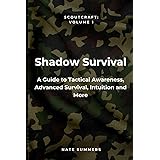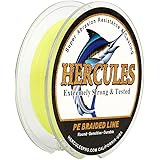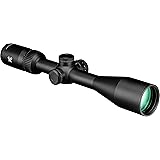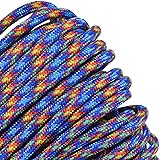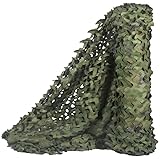Venturing into the snowy wilderness presents unique challenges, particularly when it comes to maintaining warmth and cooking nourishing meals. As demonstrated in the video above, securing a comfortable night’s rest and a satisfying breakfast in frigid conditions is not merely about enduring the cold; it requires strategic planning and effective bushcraft techniques. Many outdoor enthusiasts struggle with the pervasive chill, often sacrificing comfort for the allure of winter camping. This article delves into proven strategies for winter camping, offering solutions to common cold-weather dilemmas, ensuring your next snow camping adventure is both safe and enjoyable.
Mastering Winter Camping: Comfort, Cooking, and Survival in the Snow
Successfully navigating a winter camping trip hinges on understanding heat dynamics and implementing robust cold-weather strategies. The primary goal is to minimize heat loss and maximize heat generation, both personally and within your immediate environment. This involves more than just bringing warm gear; it demands an active approach to fire management, ground insulation, and caloric intake.
The Unrivaled Power of a Strategic Winter Campfire
The video highlights a critical insight: a large, well-managed fire is arguably the most effective tool for generating warmth in a winter camp. Its utility extends beyond simply providing direct heat; it fundamentally alters the immediate campsite environment. Consequently, mastering fire building in snow is a cornerstone of comfortable cold-weather survival.
Building Your Blaze for Maximum Heat
To establish an effective winter campfire, initial site preparation is paramount. Begin by clearing a substantial area of snow down to the bare earth. This prevents the fire’s heat from simply melting through the snowpack, which can quickly extinguish your flame and create a soggy, cold pit. Moreover, building a reflector wall behind your fire, using snow blocks or logs, can significantly radiate heat back into your sleeping or cooking area, thereby enhancing efficiency.
Utilize a platform, such as a layer of green logs, to elevate your fire if the ground is exceptionally wet or covered in thin ice. This improves air circulation and prevents the fire from sinking into the snow. Furthermore, selecting appropriate fuel, prioritizing dry hardwood, ensures a longer-lasting and hotter burn, which is essential for sustained warmth throughout the night.
The Science of Warm Ground Sleeping
The technique of heating the ground with a fire, as demonstrated, is a time-honored bushcraft method based on sound thermal principles. Soil, especially when dry, possesses significant thermal mass, allowing it to retain heat for extended periods. When a large fire burns in one spot, it superheats the ground, driving out moisture and storing warmth.
After the fire has sufficiently heated the ground, moving the embers and sleeping on that warmed earth creates a natural heated bed. This method directly combats conductive heat loss, which is responsible for a substantial portion of body heat dissipation in cold environments. Studies indicate that up to 50% of body heat can be lost to the ground without proper insulation, underscoring the effectiveness of this technique.
Optimizing Ground Insulation and Shelter
While a warm fire bed is highly effective, it is often complemented by additional layers of ground insulation and a well-constructed shelter. These elements work in concert to create a microclimate that significantly reduces heat loss from all angles. Consequently, thoughtful shelter design and insulation choices are critical for winter camping comfort.
Beyond the Fire Bed: Layered Ground Systems
Even with a heated ground bed, additional insulation is advisable to prolong warmth. A multi-layered approach to ground insulation typically begins with a vapor barrier directly on the warmed earth or snow, preventing moisture from reaching your sleeping system. Above this, a thick layer of natural materials such as pine boughs, dry leaves, or grass creates an insulating air pocket.
Over these natural layers, a closed-cell foam sleeping pad is essential. This type of pad resists compression and does not absorb water, providing a crucial thermal barrier. Furthermore, combining it with an inflatable sleeping pad can significantly boost the R-value (a measure of thermal resistance), offering superior protection against the ground’s chill. Empirical evidence suggests that an R-value of 5 or higher is recommended for comfortable winter sleeping.
Essential Shelter Considerations for Cold Weather
Whether you choose a tent, a tarp, or a bushcraft lean-to, your shelter’s design plays a vital role in retaining heat. A compact shelter minimizes the volume of air your body needs to warm, thereby increasing efficiency. Furthermore, selecting a shelter with good ventilation is important to manage condensation, which can otherwise lead to damp gear and increased cold.
For more primitive shelters like lean-tos, orienting the open side away from prevailing winds and building a reflective wall, as mentioned for fire management, can trap additional radiated heat. Erecting a windbreak of snow or branches around your entire camp can also significantly reduce wind chill, which dramatically increases heat loss from exposed surfaces.
Fueling Your Adventure: Nourishing Winter Camping Breakfasts
After a cold night, a warm and calorie-dense breakfast is not merely a comfort; it’s a physiological necessity. As the video highlights with its mention of “honey butter,” high-energy foods are essential for replenishing expended calories and preparing your body for another day in the elements. Consequently, thoughtful meal planning is as crucial as shelter and fire management.
The Importance of Caloric Intake
Your body burns significantly more calories in cold weather simply to maintain core temperature. A typical adult might require an additional 1,000 to 2,000 calories per day during rigorous winter activities compared to temperate conditions. Prioritizing foods rich in fats and complex carbohydrates provides sustained energy and helps generate internal heat through metabolic processes.
The “honey butter” example perfectly illustrates this principle: honey provides readily available sugars for quick energy, while butter offers concentrated fat calories for long-term fuel. Including such dense, palatable options ensures your body has the necessary resources to combat the cold effectively. Therefore, do not underestimate the power of a hearty meal in a cold environment.
Quick and Comforting Breakfast Ideas
- Oatmeal with Toppings: Instant oatmeal mixed with hot water provides a warm, quick base. Enhance its caloric density and flavor with additions like dried fruit, nuts, brown sugar, and a generous dollop of butter or coconut oil. This combination offers both quick and sustained energy.
- Pre-Cooked Sausage or Bacon: High in fat and protein, these items can be quickly reheated over a small fire or portable stove. They provide a substantial energy boost and a savory taste that can be incredibly satisfying on a cold morning. Consider bringing pre-cooked links to minimize cooking time.
- Breakfast Burritos (Dehydrated): Prepare and dehydrate tortillas filled with scrambled eggs, cheese, and sausage beforehand. Rehydrate by simmering in a small amount of water, creating a warm, protein-packed meal. This method reduces weight and extends shelf life significantly.
- Hot Chocolate or Coffee: While not a meal, a hot beverage can instantly raise your core temperature and boost morale. Adding a packet of hot chocolate mix or instant coffee can make a significant difference in your perceived comfort level and alertness.
For any winter camping trip, a well-planned approach to fire construction, ground insulation, and high-calorie nutrition will dramatically improve your experience. These strategies, from establishing a warm ground bed to preparing hearty meals, are critical for survival and comfort in snowy conditions. Remember, preparedness is paramount when exploring the winter wilderness.


